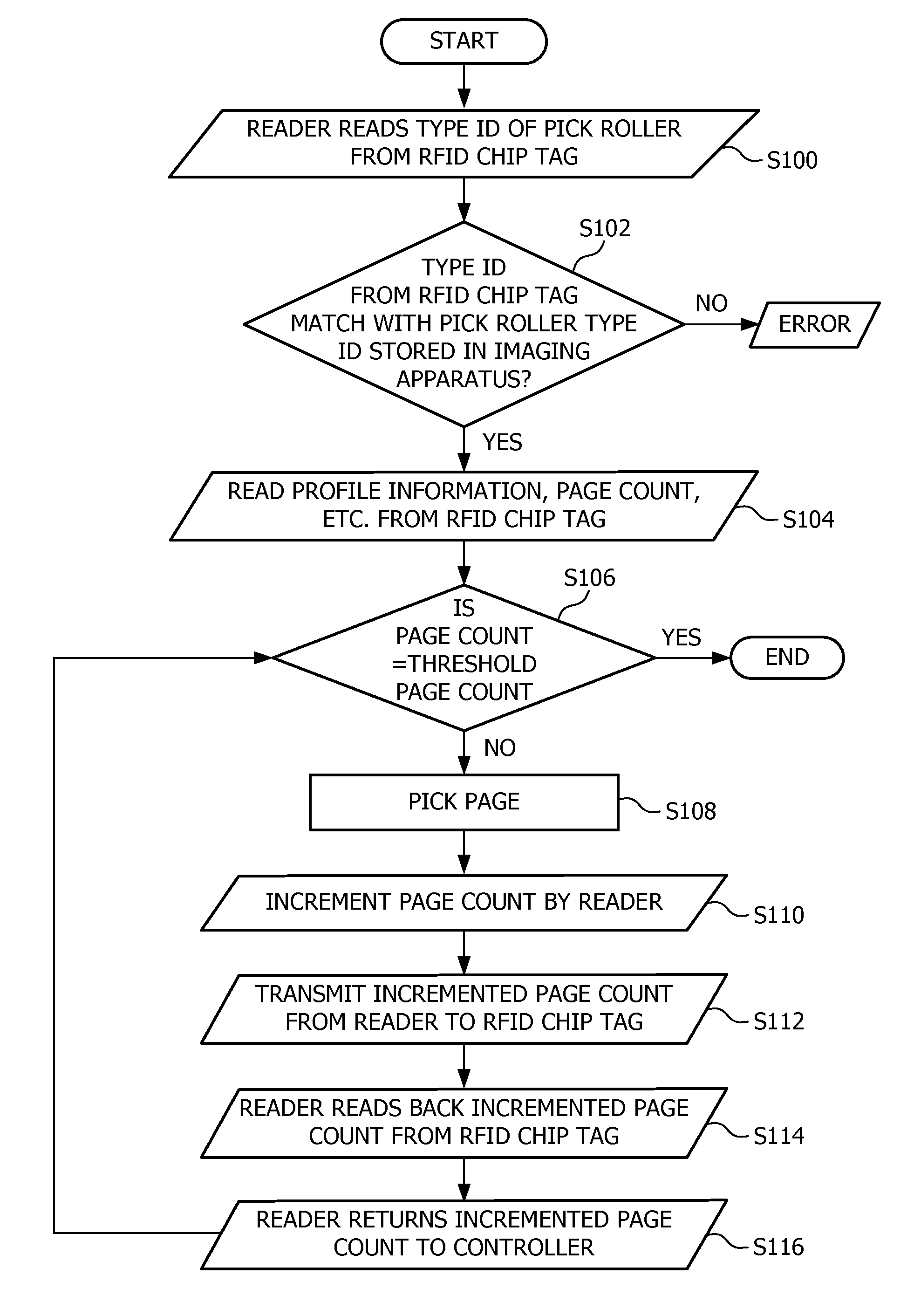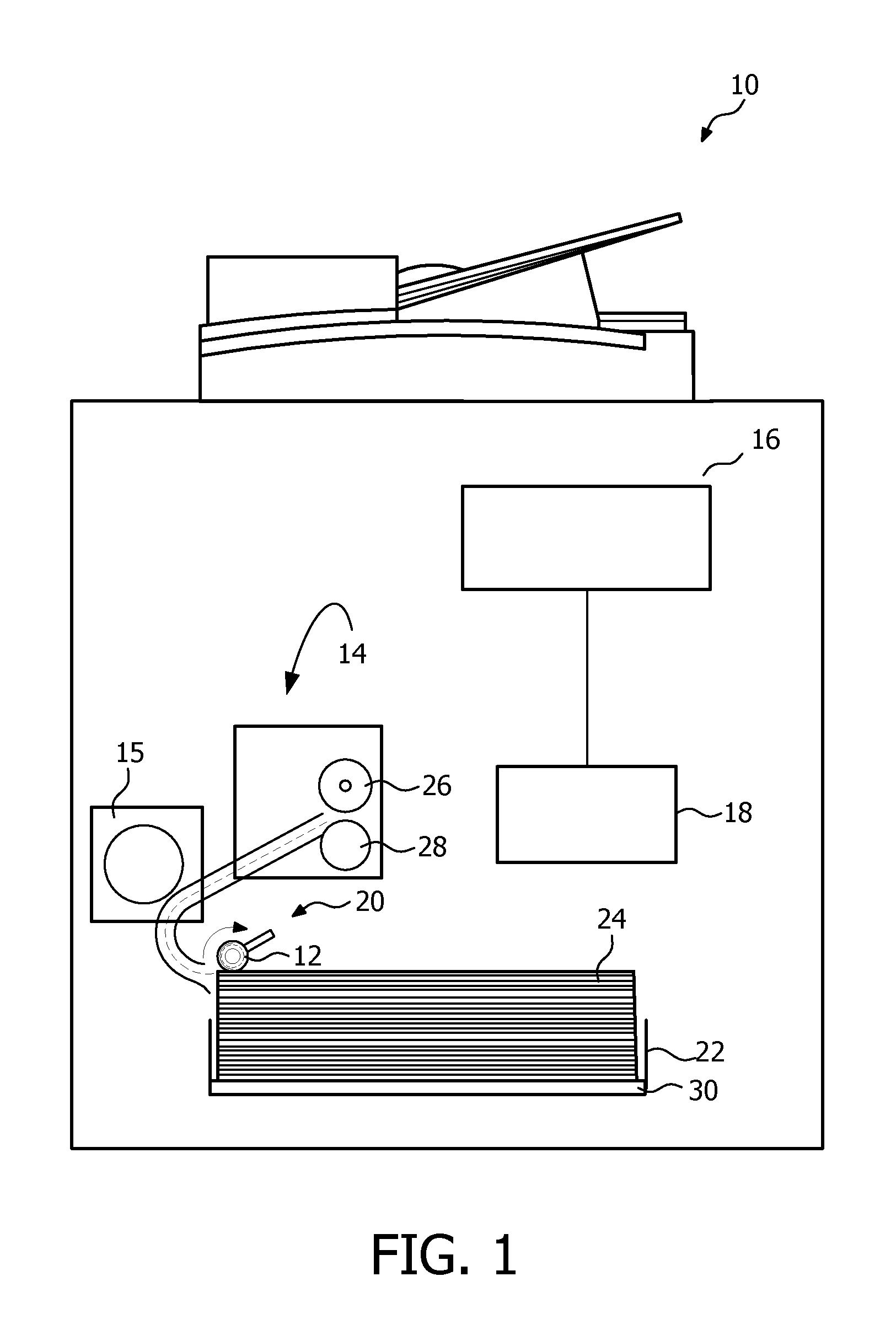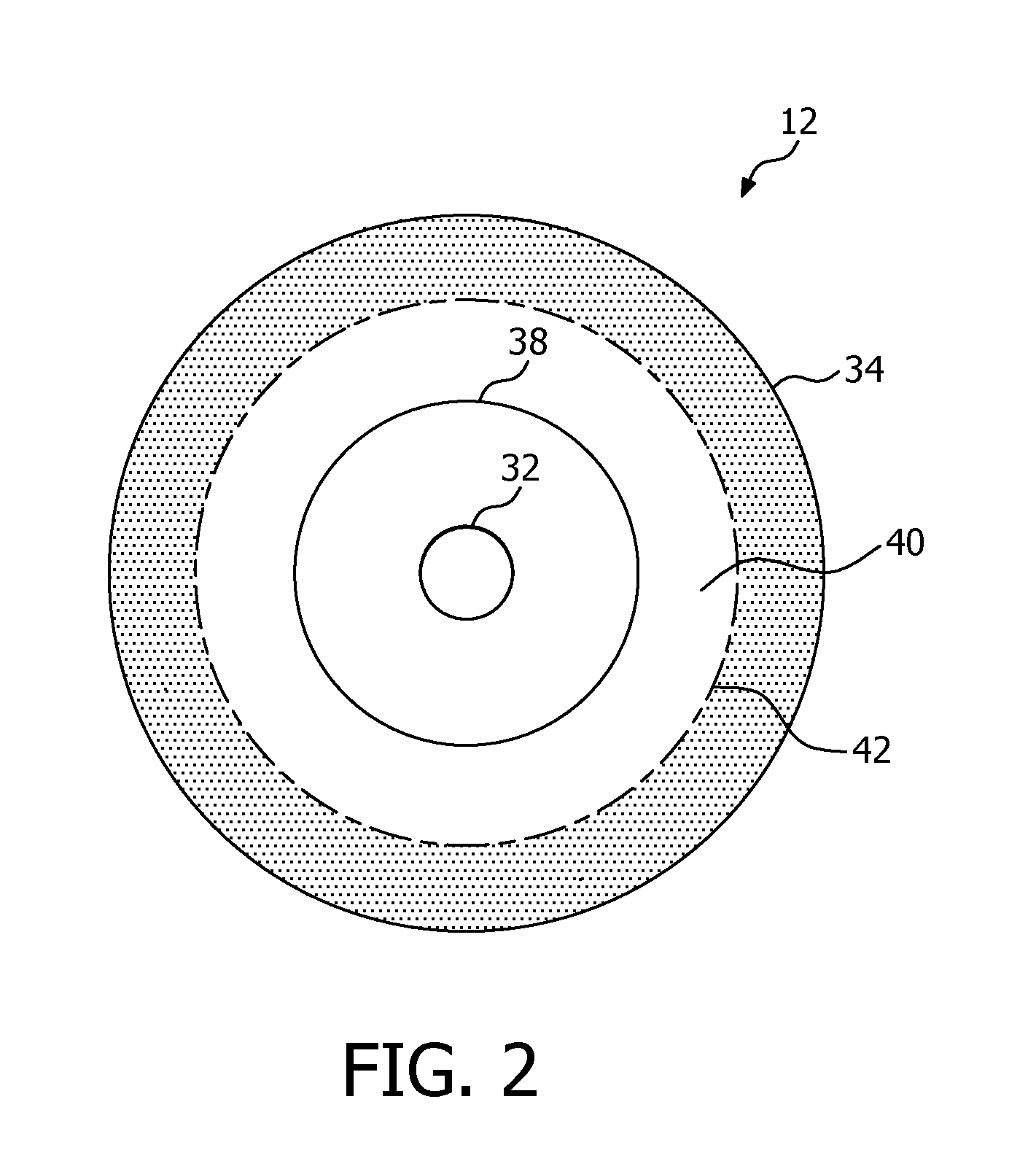Tracking the Usage of Wear Components by an Embedded RFID System
a technology of wear components and embedded rfids, which is applied in the direction of instruments, heat measurement, electrographic processes, etc., can solve the problems of significant impact on the performance of imaging apparatus, significant impact on the reliability of picking sheets of media in imaging apparatus, and significant impact on media jam rate in imaging apparatus
- Summary
- Abstract
- Description
- Claims
- Application Information
AI Technical Summary
Benefits of technology
Problems solved by technology
Method used
Image
Examples
Embodiment Construction
[0009]Exemplary embodiments of the present invention address the shortcomings of prior attempts to track the wear of wearable components and thereby satisfy a significant need for a usage tracking apparatus and method therefore.
[0010]Exemplary embodiments of the present invention utilize RFID tags embedded in the wearable components in order to track the usage thereof in systems such as an image forming apparatus, and indicate when or whether the wearable components require replacement. RFID tags are widely used today for various purposes such as identification and location tracking An RFID tag typically includes two components—an integrated circuit chip with memory for storing information and an antenna that allows the chip to wirelessly communicate information with a reader, also known as interrogator. An RFID tag needs to be placed in relative proximity with the reader for communicating data therewith. RFID tags can be active or passive in nature. Active RFID tags have their own ...
PUM
| Property | Measurement | Unit |
|---|---|---|
| conductive | aaaaa | aaaaa |
| depth | aaaaa | aaaaa |
| signal strength | aaaaa | aaaaa |
Abstract
Description
Claims
Application Information
 Login to View More
Login to View More - R&D
- Intellectual Property
- Life Sciences
- Materials
- Tech Scout
- Unparalleled Data Quality
- Higher Quality Content
- 60% Fewer Hallucinations
Browse by: Latest US Patents, China's latest patents, Technical Efficacy Thesaurus, Application Domain, Technology Topic, Popular Technical Reports.
© 2025 PatSnap. All rights reserved.Legal|Privacy policy|Modern Slavery Act Transparency Statement|Sitemap|About US| Contact US: help@patsnap.com



